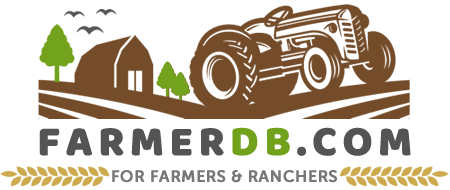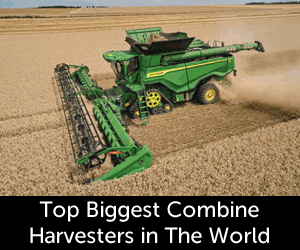The Meishan pig is known as the oldest domesticated pig breed in the world.
This breed is part of a larger group called the Taigu pig breed and originates from Jiangsu Province in Southern China. Its name comes from Meishan Lake, which is located in that province.
In the past, this breed existed in three different sizes: small, medium, and large. However, only the small and medium sizes survived, while the large variety went extinct.
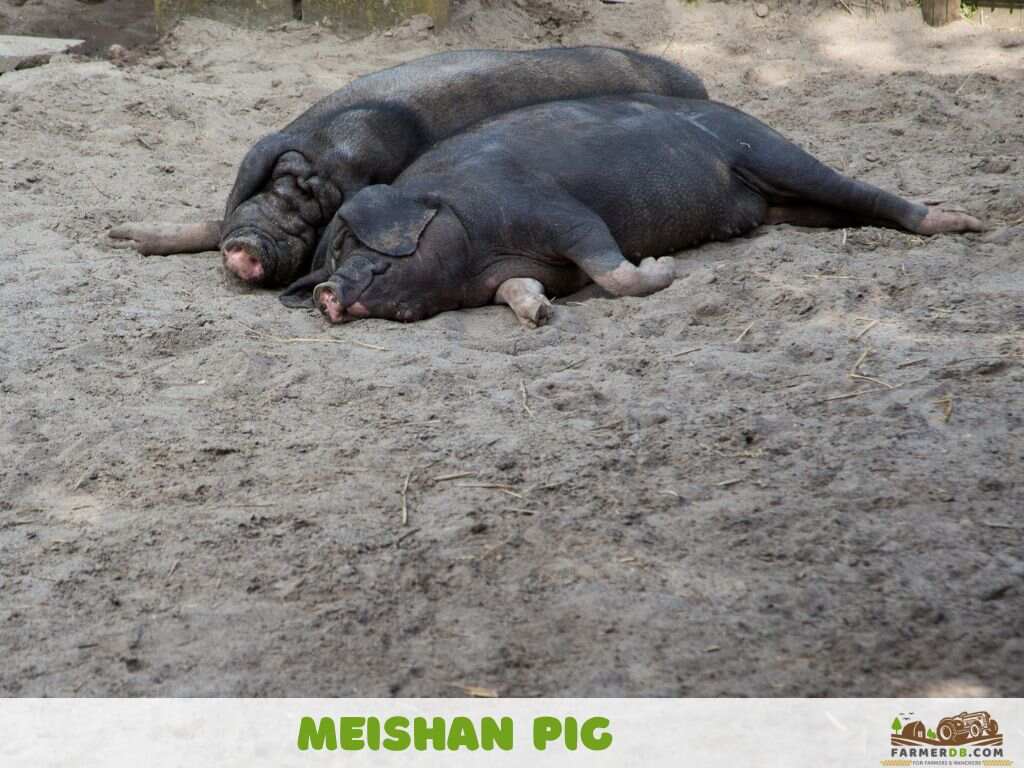
Today, the small and medium Meishan pigs in China are considered two distinct breeds.
In 1989, the small-sized Meishan pig was imported to the United States, where it was mainly raised on small farms.
In 2018, this breed was declared endangered by the Livestock Conservancy.
Contents
Characteristics
Color
These pigs have a black coat, but not a solid one, as their color can range from light gray to dark gray in some individuals.
Skin
The skin of these pigs is one of their most distinctive features. It is black, wrinkled, and loose. The wrinkles are prominent around the face, neck, and legs.
Head
Their head is broad and elongated, with deep wrinkles that run across the forehead and down to the snout.
Face
Meishan pigs have heavy-looking faces with deep fatty folds that develop as they grow older.
Ears
The ears are large and floppy, hanging down over the sides of their face, sometimes even covering part of their eyes.
Body
These pigs have a compact, rounded body with a wide midsection, giving them a very bulky appearance. Their underbelly is also covered with thick skin and fat folds.
Legs
The legs of this breed are short and strong. Some individuals have dark-colored skin, but it is also common for some to have white markings, resembling socks, on their legs.
Teats
A Meishan sow can have between 16 and 20 teats.
Size
These pigs have a medium size, with an average wither height of 22.75 inches (57.8 cm).
Lifespan
The lifespan of Meishan pigs is around 12 to 15 years.
They are capable of living a bit longer than, for example, the Mulefoot hog or Cinta Senese pig. Their longevity, like any other livestock, can be influenced by diet, living conditions, and other management practices.
Growth Rate
How fast do they grow?
These pigs are slow growers and require much more time than commercial pigs to reach a good weight, but they grow slightly faster than some heritage pig breeds, such as the Vietnamese Pot Bellied.
They can achieve a good weight at 15 to 16 months old, which is more than twice the time it takes for fast-growing pigs like Landrace.
While their growth rate falls somewhere in between, this slower development was one of the reasons they did not gain popularity on farms or homesteads.
Meishan pig growers have noticed that the growth rate data shows wide variations, which suggests that the growth rate of these pigs is strongly influenced by genetic factors, environmental conditions, and diet.
Weight
At maturity, a Meishan male can reach a weight between 275 to 375 lbs (124.74 to 170.10 kg).
What is unusual and less common in other pig breeds is that in Meishan pigs, the female is heavier than the male.
A female, when it reaches maturity, can weigh between 300 to 400 lbs (136.08 to 181.44 kg).
But while the females are heavier, they are not larger in terms of overall size
Slaughtered Time
You can prepare these pigs for slaughter around the age of 15 to 16 months when they can have a weight of 180 to 345 lbs (81.65 to 156.49 kg).
Even at this age, you can achieve a good backfat thickness of up to 2.5 cm and a dressing percentage of up to 66.8%.
The great cuts that the Meishan pig is popular for are pork belly, shoulder, loin, chop, ribs, and tenderloin.
Temperament
Their temperament is not only gentle but also extra calm, friendly, and docile.
This calmness in Meishans comes from the fact that they are a lazy and sedentary breed.
They are not as curious and energetic as other pigs. Instead, they prefer to stay calm and observe their surroundings without exploring too much. This means they are not often near the fence that surrounds their living area. It’s also not in their nature to jump over fences, as they simply don’t exhibit such behavior.
Also, their soft nature makes them very quiet. They rarely make noise, and when they do, it is certainly during the breeding period. This is an advantage, as with some livestock, you can’t tell when they are in heat, but with these pigs, you can easily identify the right time.
They are not afraid of new objects introduced into their environment, nor are they frightened of people. Furthermore, they have a very good memory and can remember faces as well as certain training routines once they’ve been taught.
Meat
Meishan pig meat is often referred to by gourmets and food connoisseurs as the Wagyu beef of the pork world.
This comparison to Wagyu beef is completely accurate, as the meat from this pig is exceptionally micro-marbled.
In addition to its micro-marbling, some cuts have a thick layer of fat, making them especially appealing, particularly for bacon.
The combination of this fat and micro-marbling, along with the slower growth rate, are key factors that contribute to its higher price.
Another notable feature of this meat is its deep red color, which is much richer than other pork cuts.
In addition to its high-quality meat, the Meishan pig is also known for producing lard. It is capable of producing a significantly larger amount of lard than commercial pig breeds. For instance, a commercial pig can produce only 1.5 to 2 gallons, while a Meishan pig can produce up to 4.5 gallons.
Besides producing more lard, it is unique because it melts at very low temperatures, or as some might say, it melts in your mouth.
Raising
Feeding
When feeding these pigs, special attention must be given to the stage of life they are in. You cannot feed a lactating sow or a gestating sow in the same way as boars or sows at maintenance weight. Piglets also require a specific diet tailored to their needs.
Adult sows and boars should be given a diet rich in protein to maintain their health.
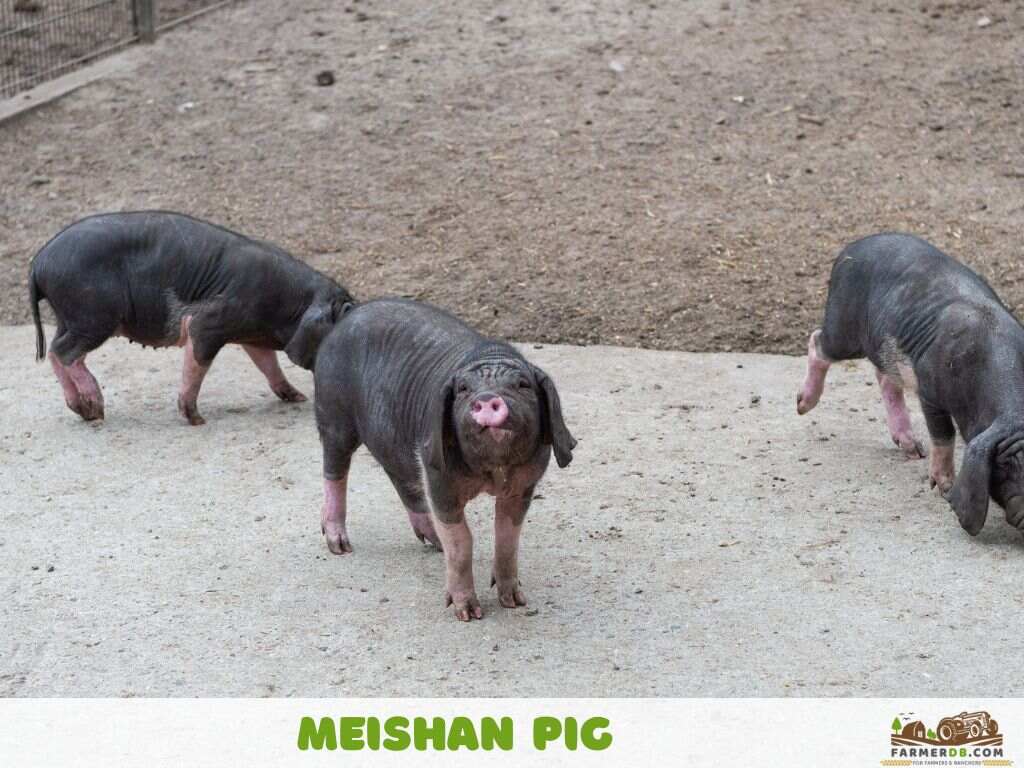
At the same time, be cautious of the quantity provided, as these pigs are prone to over-fattening, which can lead to health issues.
Piglets need a protein-rich diet to help them grow quickly, so offering a starter feed with high-quality protein sources is a good option.
Like other breeds, Meishan pigs can benefit from quality forage and pasture. Fresh grass provides essential nutrients that support their health and digestion.
Make sure the pasture is not too rich in fiber. Also, all other feeds, such as grains, should have a low fiber content.
Studies show that Meishan pigs should not be fed a high-fiber diet because excessive fiber hinders the absorption of nutrients. A high fiber level also slows weight gain, which is undesirable since their growth period is already longer.
Based on these findings, it’s best to avoid high-fiber feeds like hay, alfalfa cubes, and brewers grains, and to keep the total fiber content in their diet around 5% for growing pigs.
You can also provide mineral supplements such as calcium, phosphorus, and zinc, along with vitamins D and E. Make sure they always have access to clean, fresh water.
Environment
Pasture-based environments are ideal for Meishan pigs, as they enjoy the opportunity to forage, despite being sedentary by nature.
The ability to root, graze, and engage in natural behaviors enhances their well-being and reduces stress.
While pasture-based systems are optimal, Meishan pigs can also adapt well to semi-intensive environments. In these systems, they have access to both indoor and outdoor areas, allowing them to graze during the day and be sheltered at night, still benefiting from a natural lifestyle.
Climate
These pigs do well in temperate climates with mild winters and moderate summers. It is also possible to raise them in colder climates if they have access to shelter to keep them warm and dry.
They should not be raised in hot, humid climates because their thick skin and fatty layers make it difficult for them to tolerate heat.
Shelter
Like all livestock, these pigs require shelter when faced with harsh weather conditions such as strong winds, snow, prolonged rain, or low temperatures. To provide extra comfort, it’s a good idea to prepare dry bedding made of hay or straw. The bedding will help keep them warm and dry, reducing health problems caused by cold temperatures or wet conditions.
Make sure the shelter is well-ventilated.
How many pigs per acre?
You can raise 8 to 10 pigs per acre in conditions of good pasture.
Make sure to take into account other factors when adjusting the number of pigs per acre, such as how much supplemental feed you provide, the quality of the pasture, the age and condition of the pigs, and how many sows are pregnant.
If the pasture quality is poor or moderate, you should consider reducing the number of pigs. The same approach applies to supplemental feed. More feed allows for more pigs, while a lack of supplemental feed requires reducing the number.
Breeding
Meishan is one of the pig breeds that reaches puberty very early, around 2.5 to 3 months of age.
In addition to their early puberty, they also have a trait of hyper-productivity.
Sows of this breed are capable of having two litters per year, with each litter containing 15 to 16 piglets. What is remarkable about this breed is that the more litters a sow has, the more piglets she produces. By the third farrowing, a sow is capable of having up to 20 piglets.
In a USDA research herd, one sow once farrowed 28 piglets.
A Meishan piglet weighs between 1.76 to 2.09 lbs (0.80 to 0.95 kg) at birth.
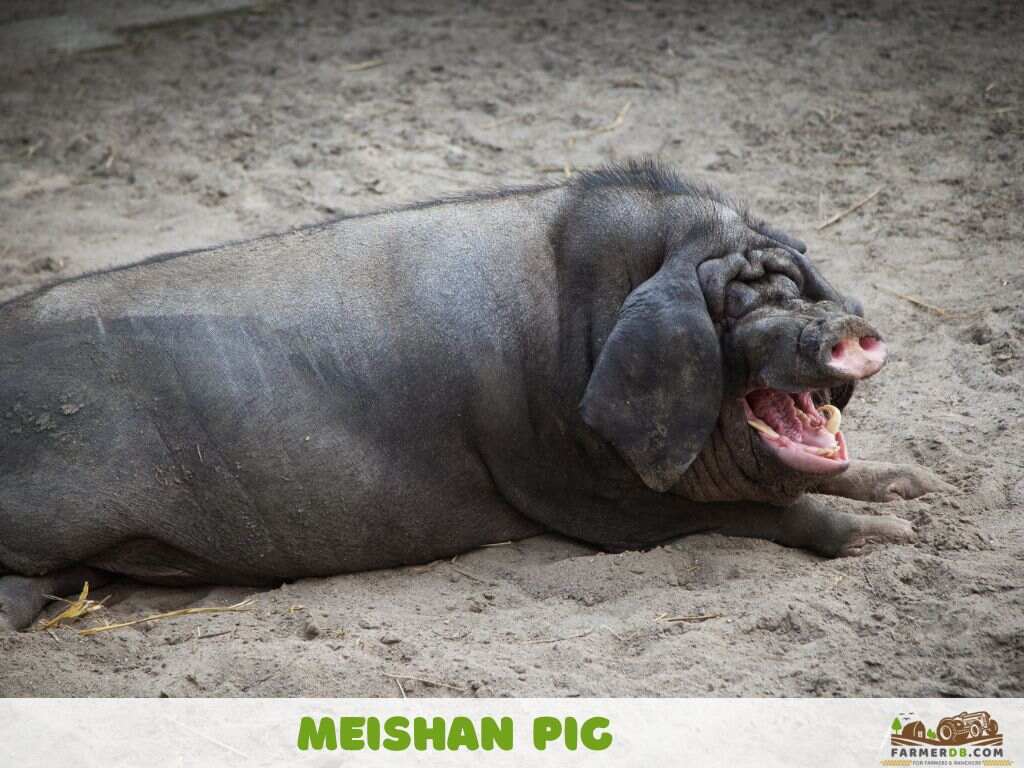
Sows are known to be good mothers. They take care of their piglets until weaning without any issues.
Regarding milk production, they even have up to 20 teats to nurse these large litter sizes.
Although they are good mothers, it is great to give them a helping hand. With so many piglets, it’s important to monitor each one to ensure that they all get a turn at a teat and nurse properly. This way, you reduce the risk and help ensure that as many piglets as possible survive.
Health Issues
Due to their genetic propensity to produce high levels of fat, Meishan pigs are at risk of becoming overweight, especially if they are overfed or if their environment does not allow them to exercise enough. Overfatness can lead to issues such as reproductive problems in sows, joint stress, and general health complications.
Why should you raise them?
This pig breed is ideal for those who want to raise pigs without dealing with more energetic temperaments or the need for extensive care, such as fencing or constant monitoring.
These pigs spend a large portion of their time resting, and when they are active, they graze lazily in their designated area. Since they don’t tend to roam or jump over fences, this can also lead to reduced veterinary costs.
This breed is also good for smaller farms, especially for those looking to achieve a larger population in a shorter amount of time. With large litters of piglets and early maturity, they are good for quickly building a large herd.
In terms of cost, they are not excessively expensive, with piglets being priced between $300 and $500.
Advantages
- Early puberty
- High reproductive capacity
- Good mothering ability
- Marbled meat
- High quantities of lard
- Hardiness
Disadvantages
- Tendency to overfatten
- Slow growth rate
- Limited genetic diversity
